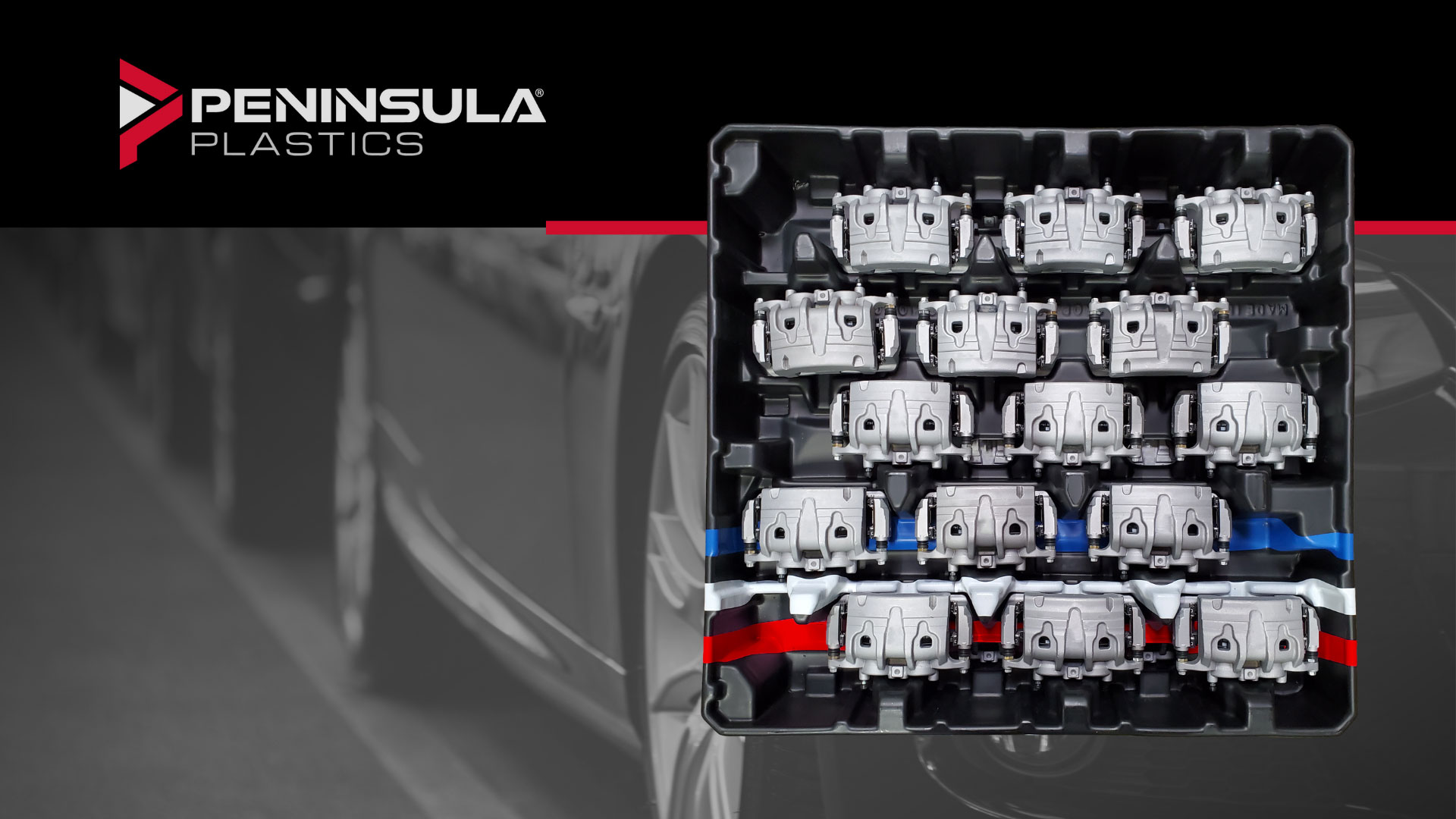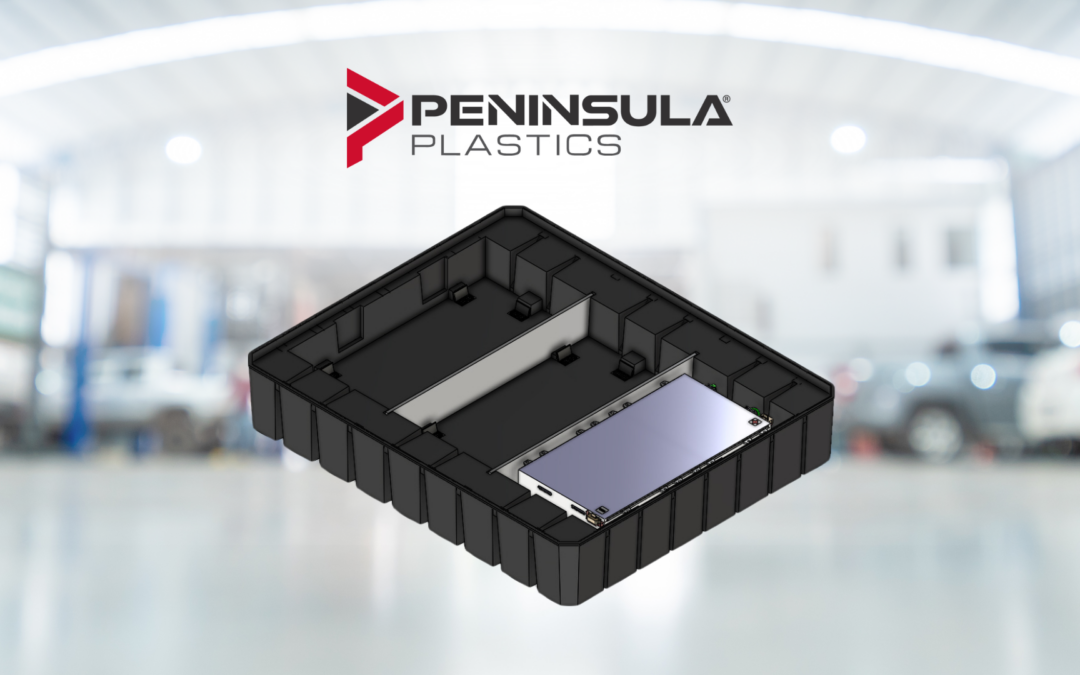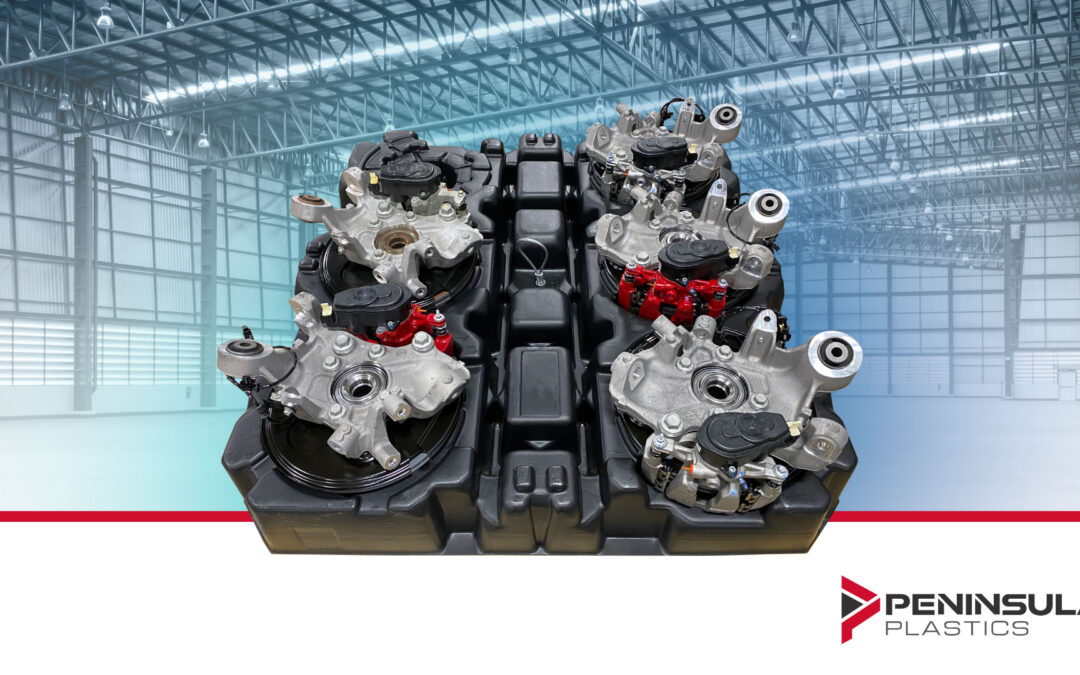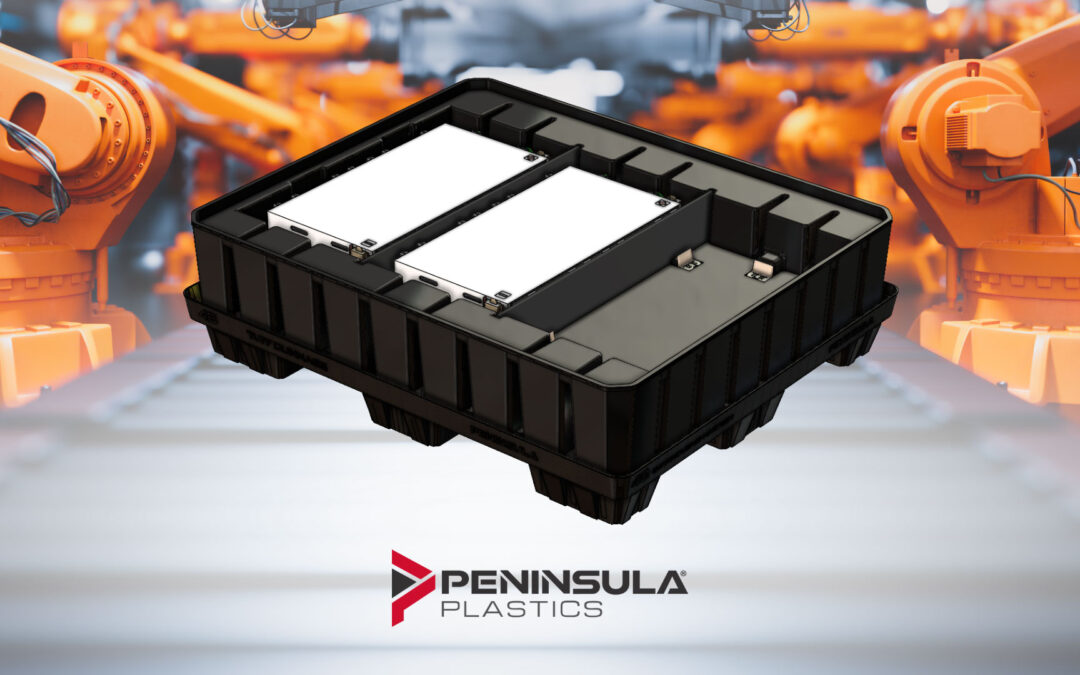Ensuring that vehicle components are safely and efficiently handled is paramount within the automotive industry. At Peninsula Plastics, we specialize in manufacturing reusable pallets, lids, trays, and containers that meet regulatory requirements. From ergonomic specifications to rigorous testing protocols, our commitment to developing innovative and durable packaging ensures automotive parts are protected while shipped and stored. Explore how our comprehensive approach to regulatory compliance sets us apart in delivering quality packaging solutions tailored to industry needs.
Ergonomics Requirements
Peninsula Plastics prioritizes workplace efficiency and productivity by emphasizing worker safety, comfort, and moveability. Our products are strategically designed to enhance the handling of components and packaging within manufacturing facilities. In return, production processes are streamlined, and workers can repeatedly perform tasks safely and effectively. By integrating ergonomic principles into our designs, we aim to optimize operational workflows while safeguarding the well-being of your workforce. When beginning a packaging concept, ergonomic requirements are top-of-mind. The design team considers elements such as part weight, package height, and package weight.
Weight of the Packaging Contents
For automotive packaging, the weight of a part is crucial to determine the appropriate dimensions, wall thickness, maximum stack height, and more. Peninsula Plastics forms packaging to accommodate these specifications to ensure your parts arrive in mint condition. Depending on part weight, customers may utilize lift assists to minimize physical strain and reduce the risk of injury for workers.
For parts that need to be lifted directly with a lift assist, trays are designed to accommodate this application by holding parts in an ideal position. This approach ensures that the part is secure and stable during the lifting process, minimizing the risk of damage and improving the ease of handling. It also helps workers stay safe while efficiently loading/unloading parts. When the entire tray needs to be raised and lowered lift loops, hooks, plates, and other secondary components can be added to the packaging to support lifting the tray. When incorporated secondary lift assist components allow for a secure point to grab the tray while stabilizing the load with even weight distribution.
Additionally, clients may opt for operators to load and unload parts manually. To make this possible, our packaging is designed with ample clearance around the parts. This allows operators to firmly grasp the part before lifting it to guarantee safety and efficiency while handling.
Packaging Height Restrictions
Height is another important factor in determining the right design for packaging to meet our customers’ requirements. Customers often specify the maximum pack, or unit load, height best suited based on ergonomic guidelines. The total stack height helps dictate the number of layers per unit load. When used in warehouses, unit loads can be placed on a turntable or directly on the warehouse floor, influencing the maximum height of the packaging to ensure parts can be loaded and unloaded easily.
If the tray is placed on a turntable, operators can navigate it to an ideal position to perform their tasks. This facilitates efficient loading and unloading of parts. The turntable’s height and rotation capability must be factored into the maximum height calculation.
If the tray is placed directly on the warehouse floor, the height requirements will change from that of a turntable system. The packaging design must be stable and easily accessible for operators, without exceeding the maximum height restrictions. To maximize space efficiency, when designing a custom part tray, its ability to stack and nest is carefully considered to verify that dunnage is compact and stable while optimizing space in storage and transportation while adhering to height regulations.
Package Weight Considerations
Once the part weight and height requirements of the packaging are confirmed, the overall weight of the packaging is considered. Peninsula Plastics will work with you to design the perfect fit for your procedures. In the sector of ergonomics, lightweight packaging is preferred to reduce the physical strain on workers and enhance overall handling efficiency. By manufacturing with a strong material, high-density polyethylene (HDPE), our packaging solutions are engineered to be durable yet lightweight, allowing ease of use without compromising stability and protection. By addressing part weight and the package height and weight, we confirm our packaging designs are ergonomic and compliant with industry standards.
Testing Requirements
To comply with the defined requirements OEMs may request that their packaging undergo various testing. Before testing, Peninsula Plastics produces a unit pack and delivers it to an official testing facility where these assessments are conducted. While at the facility, there are special testing methods used on the packaging to determine if it meets the client-defined scope. These tests confirm whether the packaging can efficiently protect its contents.
Testing Acceptance Criteria
During and after the testing there are specific reactions and results that are examined. After reviewing, the testing is concluded by evaluating if the packaging meets the predetermined acceptance criteria. A few of the benchmarks analyzed are:
- Safe Handling and Containment: The package must be safely handled while securely containing the product.
- Closure Mechanisms: If the packaging has closure mechanisms, they must remain closed and locked throughout the testing process.
- Product Positioning: The product must remain in the proper location within the container, without shifting or becoming dislodged.
- Compression Requirements: The package must meet the defined level of compression. This includes an acceptable level of deflection and ensures the packaging can withstand stacking and pressure without compromising safety or functionality.
Types of Testing
To ensure our packaging solutions meet the acceptance criteria, various types of testing are designed and performed to simulate real-world conditions and challenges.
Vertical Static Compression
Vertical static compression tests are conducted based on client distribution protocols. These tests vary depending on the warehouse pack stack height and are designed to ensure the packaging can withstand the pressure and weight exerted while stacked.
Random Vibration
Random vibration tests simulate the movement experienced during transportation. This testing is based on the miles traveled and can simulate truck or rail travel, depending on the determined shipping mode. It ensures that the packaging can protect the product from damage caused by vibrations during transit.
Side Impacts
Side impact tests are performed to simulate the lateral forces experienced during transportation. These tests are based on client distribution protocols and replicate the conditions of truck or rail travel. The goal is to ensure that the packaging can withstand impacts from the side without compromising the safety and integrity of the product inside.
Rotational Flat and Edge Drops
Rotational flat and edge drop tests are conducted to simulate the drops and impacts that potentially occur during handling and transportation. These tests follow client distribution protocols and ensure that the packaging can endure drops from various angles and heights while maintaining the protection and containment of the product.
Department of Transportation (DOT)
Department of Transportation testing enforces compliance with federal regulations, specifically for packaging that includes shipping hazardous materials. DOT testing helps determine if the packaging can safely transport these harmful materials without any unwanted leakage or exposure during transit. Other testing methods are used depending on safety standards set by the DOT.
Technical Cleanliness (TecSa)
TecSa testing is utilized when packaging battery modules to ensure cleanliness and quality standards. TecSa inspections aim to verify that packaging supports stringent cleanliness requirements, preventing contamination and ensuring reliability in automotive applications. These inspections depend on adherence to specific cleanliness protocols and quality assurance measures.
We ensure our products meet the highest durability and safety standards by providing reliable protection for automotive parts throughout their journey. When designing custom packaging solutions, automotive regulations including ergonomic requirements are implemented. In addition to ergonomic requirements, our designers create packaging that achieves/exceeds client distribution protocols. To learn more about our custom automotive packaging, reach out to sales@peninsulaplastics.com.




